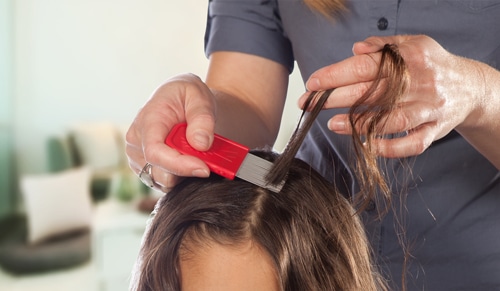Helpful Hints and Lice Removal Tips
Treating head lice can be frustrating, but here are some helpful hints and lice removal tips so that your family can become lice free.

Helpful hints for successful treatments and lice removal:
- Take it slow and remember to read and follow all directions carefully and completely.
- Self-medication is not a good idea as you cannot see the back of your own head. A second person needs to remove the lice and nits (eggs).
- To be effective, any head lice treatment must come in full contact with all head lice. Any head lice missed, or only partially immersed, will likely survive treatment. Do not try to share a single application across multiple family members because you may not have enough for everyone.
- Lice congregate at the nape of the neck and behind the ears. Be sure to saturate these areas with the head lice treatment first and work the product up from there. Using a nit comb, begin the comb-out process at the nape of the neck.
- As recommended, complete a second treatment in seven days to kill any newly hatched lice.
- If lice infestation persists, contact your doctor.
Clean up after an infestation:
- Wash all bedding and clothing that your child has used. Wash in hot water (at least 130°F) or run them through your dryer’s hottest setting for at least 30 minutes.
- Dry clean items that cannot be washed.
- Soak all hair care items (such as combs, brushes, hair clips, etc.) in hot water (130°F) for 15 minutes.
- Place items that cannot be cleaned or run through the dryer, such as stuffed animals and toys, in a tightly sealed plastic bag for 10-14 days.
- Follow up with a vacuum to get rid of any head lice or egg shells that were left behind.
How can I avoid a reinfestation?
- Learn what the signs are so you can catch a lice infestation early and treat it.
- Even if all head lice and nits appear to be gone, follow through with the recommended second treatment.
- When treating, check carefully for nits (eggs) and remove all of them.
- Keep in touch with your child’s school so you will know if there has been a head lice outbreak.
- Teach your child to avoid sharing personal items with friends. These include items such as combs, brushes, hats, hair clips, headbands, headsets, helmets, clothing, stuffed animals, costumes, pillows and coats.
- Periodically check your entire family’s hair for lice and nits.
